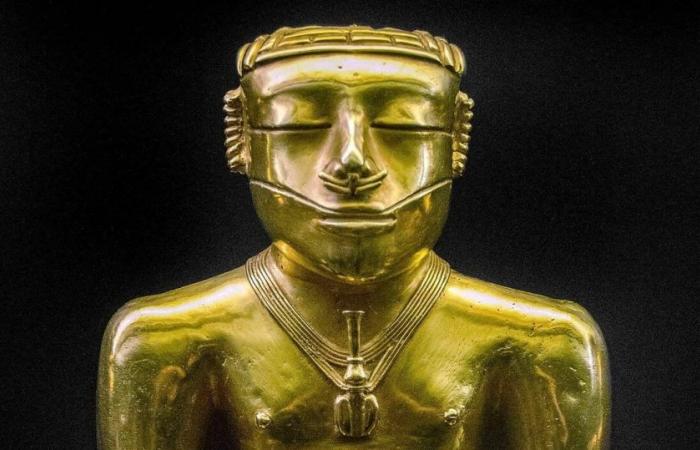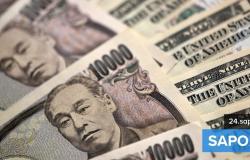Jorge Enrique Botero, in Bogotá:
The 122 gold pieces from the Quimbaya Treasury that are in the Museum of America in Madrid must be returned to Colombia, as they were donated illegally in 1892 by the then president Carlos Holguin (1888-1892) to Queen Maria Cristinasaid the lawyer Felipe Rinconauthor of a legal appeal that resulted in a decision by the Constitutional Court that forced the government to begin the recovery process.
Rincón explained to the La Jornada that the pieces, discovered around 1890, were taken to Madrid in 1892 to celebrate the 400th anniversary of the arrival of Christopher Columbus to American lands, but President Holguín decided to gift them to the queen. “Holguín did not have constitutional or legal capacity, as the pieces were part of the nation’s heritage and any eventual donation had to be approved by Congress, which did not happen,” he explains. He regrets that since 2017 no government has followed up on the Constitutional Court’s decision, until last September the president Gustavo Petro declared Colombia’s interest in repatriating them.
William Ospina’s reaction
Attention returned to the pieces after statements by the Culture delegate of Madrid City Hall, Marta Rivera de la Cruzto which the writer William Ospinawinner of the Rómulo Gallegos Prize (2009) for his novel “The Cinnamon Country”, did not hide his astonishment and told the La Jornada: “I believe that there are things that cannot be debated. Whether Spain plundered and plundered in America is something that does not belong to the order of discussion, so great is the evidence.
“The treasure obtained from the sack of Tenochtitlán actually traveled to Spain, the treasure obtained from the kidnapping of Atahualpa was taken to Spain by Hernando Pizarro. Galleons traveled to Spain carrying gold and silver from New Granada, Mexico and Peru. This evidence does not depend on the opinions of employees,” he added.
Also read | More than 25 museums in Latin America offer online visits; check out
Ospina mentioned the illustrations of the Botanical Expedition “for the return of which I advocate in my novel ‘I will put my ear to the stone until it speaks’. Not only are they an invaluable cultural heritage, but they also belong to American memory in an indisputable way. Every day they are more important to us, they were stolen when we had already declared independence, and whoever packed them for Madrid shot the artists.” “This is enough for the Spanish justice system, that of Lope de Veja and that of Cervantes, hate this especially reprehensible rapine. Will they ever return to our territory? I don’t know. I believe that desiring it is fair, that arguing it is correct and that it is neither a matter of war nor a matter of courts: it is a matter of the rectitude of human conscience. Nothing more”, concluded the also poet and essayist.
Petro reinforces search for recovery
Armando G. Tejeda, in Madrid:
The Treasury of the Quimbayas has been part of the Spanish State collections since, in 1893, it was donated to Queen Maria Cristina by the then Colombian president Carlos Holguín, but last September, the government of Gustavo Petro insisted on its intention to recover the treasure, preferably through dialogue, but without discarding the legal route.
It is a work made up of 122 pieces of gold that was discovered in 1890 in Filandia, a municipality in the department of Quindío, and which corresponds to the Quimbaya culture, which after the Spanish conquest was confined to the center of Colombia until it disappeared in the 17th century. President Holguín intended to thank the Spanish crown for help in Colombia’s border dispute with Venezuela. Another 90 pieces from the same treasure are preserved at the Field Museum in Chicago.
Decolonization of museums
There is an open debate in Spain about the “decolonization” of state museums, which not only intend to return some artistic and archaeological pieces that are in the possession of the Spanish State, but also, and above all, to assume a new way of understanding art, that is not based exclusively on Western canons.
“This is not a colonial review because in Spain colonialism was not practiced in museums. Spain didn’t have colonies, it had viceroyalties,” he said. Marta Rivera de la Cruzdeputy mayor of Madrid City Council and delegate for Culture, Tourism and Sports.
In an interview with the news agency Europa PressRivera de la Cruz, who is also a writer and held several public positions, the last of which was Cultural Councilor of the Community of Madrid, also categorically stated that there was no “spoliation” in Spain’s colonies in America either.
This Madrid employee and writer began her political career in the liberal party Ciudadanos, already on the verge of extinction, and from then on she went on to hold public positions in the governments of the Popular Party (PP). The Madrid City Council, governed with an absolute majority by the PP, appointed her as the person most responsible for the city’s Culture, hence her reference to heritage issues and public policies surrounding museums.
New cultural policy
When asked precisely about this policy that the Minister of Culture of the Spanish government, Ernesto Urtasun, from the left-wing coalition Sumar, intends to apply, Rivera de la Cruz stated that this “does not make sense” and that “it is a topic that is not sustainable in Spain”. She literally said: “It just doesn’t make any sense to me.”
In Spain, this is not a colonial review simply because in Spain colonialism was not practiced in museums. Spain had no colonies, it had viceroyalties and when someone travels through Latin America, they realize that everything that was obtained in excavations, which, in fact, were paid for by the kingdom of Spain, remained in place, that is, it was not brought here . Spain did not plunder its countries to bring the things it found.”
Differences
The Madrid employee compared what happened during colonial times in Latin America to what happened in Belgium and its colonies, the latter being the reference for this type of public policy in museums on the part of the Minister of Culture. Rivera de la Cruz explained that “what happened in Belgium has nothing to do with what happened in Spain. For example, the most valuable piece of colonial art that exists in Spain, the Treasury of the Quimbayas (which is currently in the Museum of America, which depends on the central government) was not acquired by a Spanish expedition, but rather was a gift from a government to another government.”
Precisely in relation to this archaeological piece, the Spanish government itself recently recognized that “there is no doubt” about the legitimacy of Spanish ownership of the work, but that the claim by the State of Colombia for its return is also legitimate.
La Jornada, special for Diálogos do Sul – Rights reserved.
Tags: Petro government claims pieces gold illegally donated Spain
--





